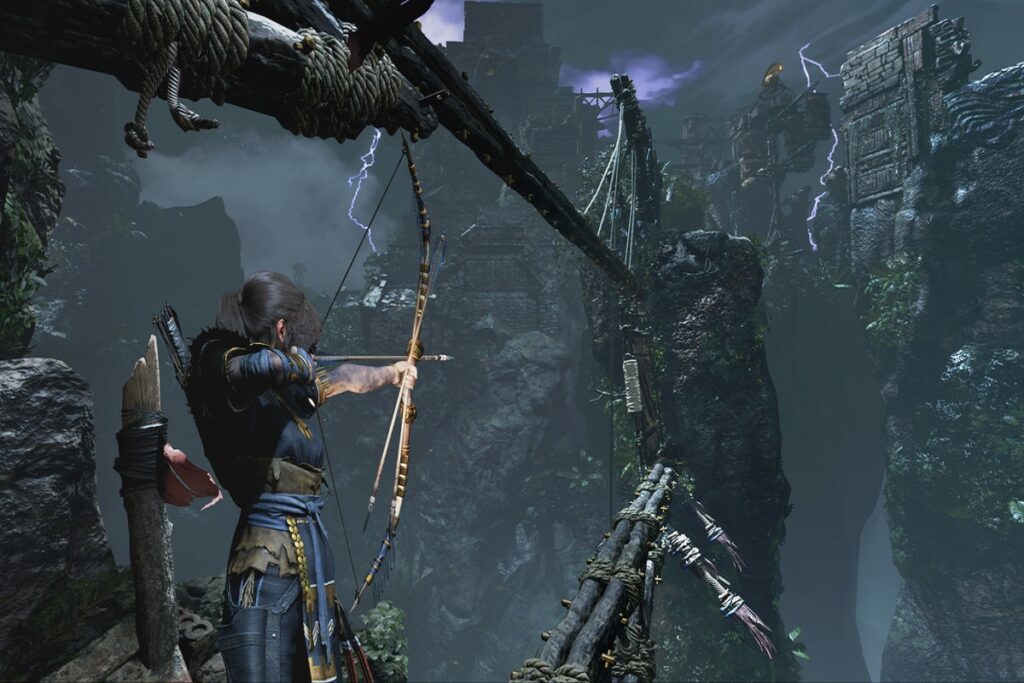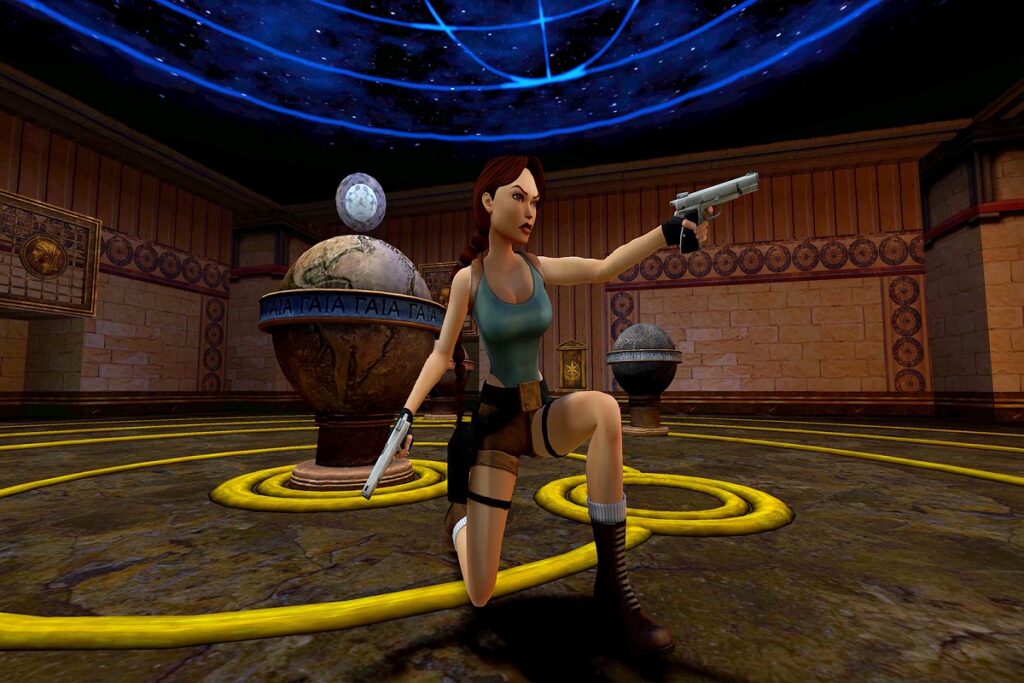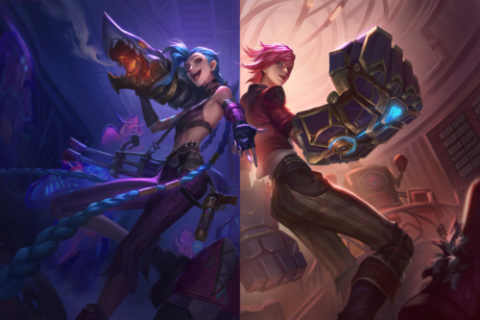
An Icon of the 20th century, Lara Croft stars in more than a dozen videogames. She appears in comics, series and even music videos. Actresses like Angelina Jolie and Alicia Vikander lent their faces on the big screen. Core Design shaped a character that soon jumped into the cultural sphere of the 90s. Over the years, Lara changed to adapt to contemporary sensibilities, garnering both appreciation and critics alike. From innovative gameplay to Lara herself, Tomb Raider became a pillar of the video game community and beyond. With new projects on the horizon like a new main title and a new TV show, Lara is a character with still plenty to say.
- The Birth of Lara Croft
- Going against trends with a female character
- The rise of female heroes, from Ellen Ripley to Sarah Connor
- The first virtual celebrity
- A franchise expanding beyond games: from comics to Angelina Jolie’s movies
- The first video game reboot: a darker story
- Next-gen tomb raiding: Lara as a femme fatale
- The Survivor Era and a more relatable character
- Open world and gritty survival: a controversial switch from the past
- A divided fanbase: the criticism towards the Uncharted series
- Expanded stories: the Dark Horse comics and Alicia Vikander’s action movie
- A new project for Tomb Raider: is there a future for Lara Croft?
- An icon of 20th-century entertainment
The Birth of Lara Croft
In 1996, Tomb Raider featuring Lara Croft hit the shelves. Initially launching on the Sega Saturn, it was later ported on computers and PlayStation. In 1994, Toby Gard, working for Core, proposed a fully three-dimensional adventure in the style of Indiana Jones. In the 90s, when adventure games mainly were horizontally oriented platforms like Super Mario or 2D scrollers, its full 3D maps with extensive verticality and interconnections were unheard of. Moreover, the grid-based level design offered versatility that had never been seen before in creating the game’s maps. Early in the game’s development, the character morphed into a woman named “Laura Cruz.” Eventually, the name Lara was chosen because of its origin. Coming from the Greek Larissa, it means “Citadel”. Co-creator Paul Douglas thought it was a metaphor for Lara’s personality: enigmatic and guarded. After changing the name, the team switched to British heritage.

Going against trends with a female character
Although the publisher Eidos Interactive wanted a male protagonist, Gard pushed the idea of going against common trends of the day. Lara Croft was born, taking cues from franchises like British post-apocalyptic punk comic Tank Girl or John Woo’s action thriller Hardboiled.
Although Street Fighter II, introducing female Interpol agent Chun-Li, was released in 1991 in Japan, Lara Croft was one of the first Western female protagonists. Under Core Design, Lara was brash, independent, and overconfident. In her first interaction, Lara states that money isn’t the goal but rather the fun of the adventure. Her determination and desire to test herself make her delve into forgotten tombs, looking for mythical artifacts. Born into English nobility, she realizes she craves excitement and adventure and abandons the safe and claustrophobic aristocracy after surviving a tragic incident.
Disowned by her parents, she travels the world testing her skills, selling books recounting her adventures to keep a steady influx of money.
The rise of female heroes, from Ellen Ripley to Sarah Connor
Her fondness for guns, acrobatic abilities, and bravado quickly allowed her a space next to 80s action girls like Alien‘s Ellen Ripley or Terminator‘s Sarah Connor. In addition to her demeanor, her body was also exceptional. Toby Gard wanted Lara to be a bigger-than-life character. Her exaggerated figure was symbolic. In fact, Lara Croft was meant to be much like a superhero, an ideal to aspire to.
Undoubtedly, her attractiveness was extensively used in advertising. Commercials, posters, and even a Playboy spread highlighted Lara’s features. With that said, the actual games hardly focused on the character’s looks. Her intelligence, wit, and determination were the primary aspects of her character. In addition, Lara was also portrayed as aggressive. She did not shy away from violence, whether killing long-thought-extinct dinosaurs or gunning down mercenaries standing in her way while spouting one-liners.

While Tomb Raider’s level design was inspired by the complexities of ancient Pharaohs’ tombs, the game and its sequels are set in multiple countries. Lara never stuck to a single location and braved tombs and ancient temples around the globe. She stopped at nothing, even infiltrating Area 51 to reach her goals.
The first virtual celebrity
These globetrotting adventures forwarded Lara Croft into stardom. The success of the game and the affection for the character made Lara a celebrity, much like a real actress. She started appearing in soda commercials, car advertising, and interacting with actual actors. Lara even appeared at a concert by the rock band U2. The group paid homage to the adventurer, as in her diary, she wrote the Irish band was her favorite. Online forums and fan pages spread like wildfire.
Lara Croft wasn’t only popular among stereotypical male gamers. A significant portion of her fans were women and gay men. Following Gard’s initial ideas, Lara Croft was a woman to look up to, and plenty of women, inspired by her confidence in her looks and abilities, set out to conquer their challenges and make a difference in the world.
A franchise expanding beyond games: from comics to Angelina Jolie’s movies
The franchise expanded beyond video games. In the late 90s, comics by Top Cow explored Lara’s character in detail, as the video games portrayed an almost sociopathic Lara. These comics introduced friends, rivals, and companions as independent and full of life as the games.
For example, in a crossover event with the urban fantasy comic Witchblade, the protagonist Sara Pezzini becomes Lara’s best friend. Moreover, while the games never cared about Lara’s romantic entanglements, the comics featured flirts with various men, like the hate/love relationship with Chase Carver, a rogue Han Solo-like character initially introduced as Lara’s ex-boyfriend. The comics also explored Lara’s ambitions. At times, helping the downtrodden, and at other times almost an anti-hero. Lara’s comic interpretation was similar to DC Comics Catwoman.
In 2001, a Hollywood movie starring Angelina Jolie brought Lara to the silver screen. In the film and its sequel, Jolie was applauded for her interpretation of Lara’s passion for adventure, allure, and determination. The actress followed the character’s proclivities as she tried to do most of the stunts herself.
The first video game reboot: a darker story
In 2003, Angel of Darkness was released as a divisive title. Entirely using the PlayStation 2 capabilities, the game was much more ambitious than its predecessors. The story was darker as well. Accused of the murder of her mentor, Lara has to stop an ancient cabal from gathering supernatural powers. Featuring stealth mechanics, role-playing elements, and a plethora of cut content, the game was panned by critics. Considered a failure, the original planned trilogy was scrapped, and Eidos transferred the franchise from Core to Crystal Dynamics. The US-based developer came up in 2006 with Tomb Raider: Legend, a complete reboot of the saga.
No longer disowned by her parents, Lara has inherited her love of adventure and history from her father. In addition, the incident that sparked her career included her mother, who went missing. In this new trilogy, Lara looked for clues about her mother’s whereabouts.
Next-gen tomb raiding: Lara as a femme fatale
Entirely in the Xbox360/Playstation 3 era, Tomb Raider Legend was a much more streamlined experience. Crystal Dynamics gave the title a Hollywood-like feeling, featuring action set pieces that wouldn’t look out of place in Mission: Impossible. As Lara Croft was compared to James Bond, the new games gave her femme fatale allure.
Compared to the isolated feel of the original games, Lara had two assistants this time, chatting with her online. The trilogy was even used to showcase new technology of the time. Much importance is given to Lara’s PDA, a precursor of tablets and smartphones.
The new games focused more on Lara’s appearance than the predecessors. Not only was she given more stereotypically beautiful traits, but the first game even had multiple unlockable outfits.
While generally appreciating a much more action-oriented game and its bombastic atmosphere, Fans were puzzled by Lara’s motivation shift. While as sassy and confident as before, she was adventuring to find her mother rather than purely challenging herself.
The Survivor Era and a more relatable character
After a remake of the first Tomb Raider and the trilogy’s conclusion in Tomb Raider Underworld, the franchise started to fade from the zeitgeist. In 2013, Crystal Dynamics pushed a second reboot with a game called Tomb Raider. Initially considered a prequel, the game featured a young Lara on her first adventure.
In stark contrast with the character’s previous iterations, Lara changed from a confident, aggressive, and aristocratic woman into a younger, inexperienced girl. The goal was to make Lara much more relatable. In addition, there was an effort to drop the perceived sexism of old that pervaded the character.
Open world and gritty survival: a controversial switch from the past
While Naughty Dog‘s Uncharted series always drew comparisons with Tomb Raider, this reboot felt much closer to Nathan Drake‘s titles. It’s an open-world, cutscene-heavy game with more emphasis on action. Dropping the dual handguns she always used, the new weapon of choice became a bow. Following the 2010s trend, Tomb Raider became a gritty story about harsh survival, as Crystal Dynamics redesigned Lara to be more realistic and fragile. Because of this, a significant schism fractured the fanbase.

Many players appreciated the open-world approach to the games and the crafting and RPG-like character-building elements. Lara wasn’t a superhero anymore but an ordinary girl fighting against impossible odds to survive. Conversely, many others strongly opposed this departure from Lara’s original self. Fans lamented that the confident, capable, and powerful woman they knew was gone. In addition, the difficulties Lara faced were built to showcase her determination, but many players thought the focus on Lara’s suffering and misery was too much, bordering on torture porn.
A divided fanbase: the criticism towards the Uncharted series
Moreover, the criticism already present in the Legend games became even harsher. That is to say, while the old trilogy had Lara looking for her mother, the Survivor games found Lara retracing her father’s quest. While the 2013 game was supposed to show Lara “becoming the tomb raider we all knew,” subsequent games still kept the survivor theme. This led to a further divide between players. Online, people decried tombs were made optional content and a much bigger focus was given to shooting sequences.

Critics and customers praised the new direction and lauded Crystal Dynamics for a more feminist approach to the character, no longer being defined by her outward appearance. Some of them, though, criticized this approach. They felt the original Lara Croft was much more feminist in design, as she didn’t need the constant support of others or a goal imposed by others. Likewise, they argued the sexualization of the character was only present in advertising. To begin with, the character was supposed to be like a superhero. A strong, beautiful woman confident in her looks and skill, as Louisa Peacock argued in a 2013 article from The Telegraph, is a much more feminist character than a girl forced through trauma as her only way to show her determination.
Some players also offered dissatisfaction that by the third game, Shadow of the Tomb Raider, Lara still hadn’t morphed into her original self. Many felt she was stuck in her 2013 persona.
Expanded stories: the Dark Horse comics and Alicia Vikander’s action movie
Following the reboot, Dark Horse Comics published a new saga of comics. Including writers like Rihanna Pratchett, these stories explore the events between the main titles of the Survivor era. Compared to the old Top Cow titles, the new comics are canon to the games, existing in the same timeline. Like in the previous books, Lara’s internal turmoil and relationships are better explored as she deals with the trauma of her missions and seeks the affection of her friends.
In 2018, Warner Bros. Pictures released Tomb Raider, an action movie starring Alicia Vikander. Loosely based on the 2013 Tomb Raider title, the movie was met with mixed reviews by critics. In 2024, Tomb Raider: The Legend of Lara Croft appeared on Netflix. Set after Shadow, the animated show is one of the first steps in Crystal Dynamics’ plan to unite every Lara Croft timeline, bridging the time between the Survivor games and the original Core Design titles.
The series received a lukewarm critical response. While most praised lead actress Hayley Atwell‘s performance, many thought the plot was unsatisfactory. Fans of the franchise split once again, some criticizing Lara’s constant emotional outbursts and the perceived stereotypical representation of some of its characters. In contrast, others enjoyed the series’ approach to Lara’s feelings.
A new project for Tomb Raider: is there a future for Lara Croft?
With much of the fanbase split and loud voices demanding a return to the classics, Crystal Dynamics envisioned a unified timeline, bringing every Tomb Raider media under a single canon.
Again, this was met with polarised reactions. While many are happy this is finally giving the old Lara back, others think the move is still entrenched in the Survivor era’s themes and characters. Moreover, some writers have expressed the idea of featuring queer stories with Lara, a concept that sparked endless discussions within the diverse fandom of the franchise. There’s more push for representation in the 21st century than in the 90s, but some believe featuring a queer Lara would be stereotyping gender roles.
In 2024, Aspyr Media released a remaster of the original three Core Design games. With upgraded models, textures, and effects, the new version catapulted the original titles into the spotlight again. The Remastered Collection had an unexpected success, and in 2025, a second collection made available the last three Core titles. Angel of Darkness, always considered the black sheep of the franchise, was also touched upon. The game was brought closer to its original inception with restored cut content, bug fixing, and a better control scheme.

The extraordinary success of the remastered games even shadowed online discussions of the murmured 12th Tomb Raider title, in development under Crystal Dynamics. Announced in 2022, the 12th main title is being worked in Unreal Engine 5. The developers intend to bring the complete Unification of the timelines, merging all different storylines and changing Lara’s character once more, taking cues from every era. In addition, Crystal is still expanding the franchise between a tabletop game and an Amazon show. Phoebe Waller-Bridge is currently writing the series, with actress Sophie Turner announced as the main lead.
An icon of 20th-century entertainment
During the years many other games were made, like the smartphone puzzle Lara Croft Go featuring Core’s Lara or a board game set in the unified Tomb Raider universe. Lara Croft is still one of the most memorable video game characters. Even non-players have heard of her. Lara, regardless of her iteration, is still an ideal to aspire to. As sensibilities change and her portrayal switches, the character can still stand the test of time. Lara Croft is to action-adventure games what Doom’s main character is to shooters.
Tomb Raider went from a title inspired by others to an influence. Aside from the aforementioned Uncharted, Indiana Jones took cues from Tomb Raider with the 1999 game Indiana Jones and the Infernal Machine. Even television series were inspired by Lara Croft, like the Canadian show Relic Hunter, which starred Tia Carrere as an American archaeologist looking for lost artifacts around the world.
The blue-top-wearing, dual-wielding gun adventurer is an unshakable icon of 20th-century entertainment and remains a favorite of many fans, old and new.








